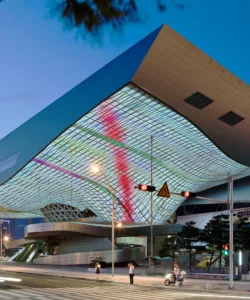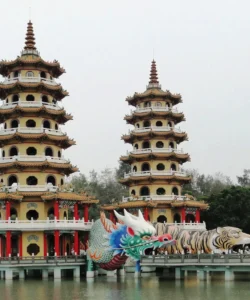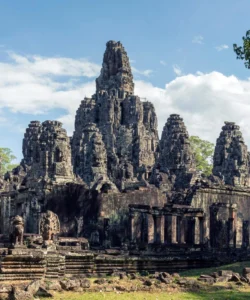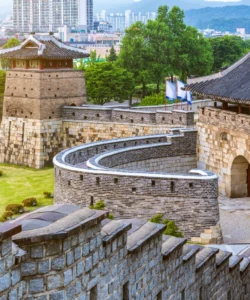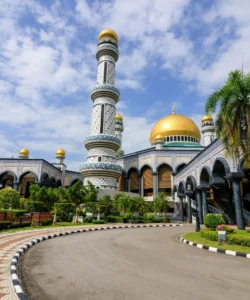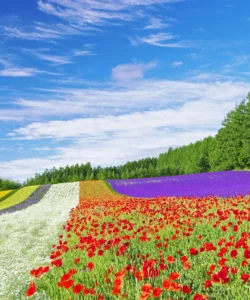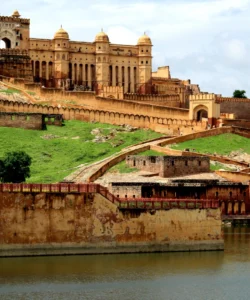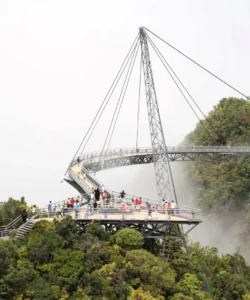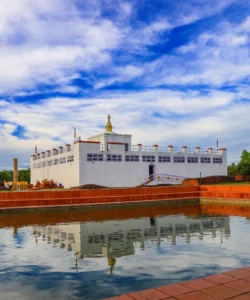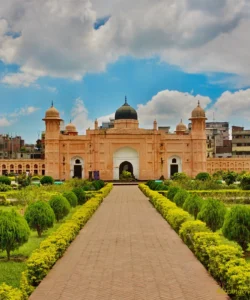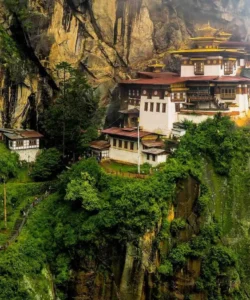Ahsan Manzil, often referred to as the “Pink Palace” or “Pink Palace Museum,” is a magnificent historical palace located in Old Dhaka, Bangladesh. Once the official residential palace and seat of the Dhaka Nawab Family, one of the most prominent aristocratic families of Bengal during the British Raj, it stands today as a well-preserved museum offering a glimpse into the opulent lifestyle and political influence of the Nawabs and the rich history of Dhaka.
Name: Ahsan Manzil Museum (Bengali: আহসান মঞ্জিল; also Pink Palace Museum)
Address: Islampur Road, Old Dhaka, Dhaka, Bangladesh. It is prominently situated on the banks of the Buriganga River in Old Dhaka, lending it a picturesque waterfront setting.
How to Get There:
Ahsan Manzil is a major historical attraction in Dhaka and is easily accessible, though navigating the bustling Old Dhaka can be an experience in itself.
- By Air: The closest airport is Hazrat Shahjalal International Airport (DAC) in Dhaka. From the airport, you can hire a taxi, ride-sharing service (like Uber or Pathao), or take a local bus to Old Dhaka. The journey can take 1-1.5 hours or more depending on Dhaka’s notorious traffic.
- By Road (within Dhaka):
- Rickshaw/Auto-rickshaw/CNG (three-wheeler auto-rickshaw): These are the most common and convenient ways to navigate Old Dhaka’s narrow, congested lanes. Negotiate fares beforehand.
- Ride-sharing apps (Uber/Pathao): Widely available for car or motorbike rides.
- Local Bus: Numerous local bus routes serve the Old Dhaka area, with stops relatively close to Ahsan Manzil.
- By Waterway (Recommended for scenic view): You can take a boat ride on the Buriganga River from Sadarghat Launch Terminal (a major river port in Old Dhaka). Many small boats offer rides, giving you a beautiful view of Ahsan Manzil from the river, which was its primary approach in historical times. You can disembark near the palace jetty.
- Walking: If exploring Old Dhaka’s historic lanes and markets (like Sadarghat, Islampur, Shakhari Bazar), Ahsan Manzil is a key landmark and can be reached on foot from nearby areas.
- Entrance Tickets: There is an entrance fee for the museum. Fees typically differ for Bangladeshi nationals and foreign visitors. Photography may have additional charges.
- Closed Day: The museum is generally closed on Thursdays and public holidays. It also closes for a short period during midday for lunch and cleaning.
- Best Time to Visit: The cooler, dry season, from October to March, is ideal. Early morning visits (after opening at 9 AM) or late afternoons are recommended to avoid crowds and enjoy cooler temperatures.
Landscape and Architecture:
Ahsan Manzil’s “architecture” is a grand and distinctive example of Indo-Saracenic Revival style, beautifully situated on the riverfront, reflecting the Nawabs’ influence and wealth.
- Pink Palace: The most iconic and famous characteristic is its striking pink color, which gives it its popular moniker. The entire palace is painted in a vibrant pink hue, making it a prominent and picturesque landmark on the riverbank.
- Riverfront Location: The palace is magnificently situated directly on the eastern bank of the Buriganga River, which historically was the main artery for trade and transport in Dhaka. Its strategic and scenic riverfront position was designed for grand arrival by boat and to catch river breezes. It features a broad flight of steps leading down to the river.
- Indo-Saracenic Revival Style: The architecture is a beautiful fusion of Mughal, European (especially Gothic and Renaissance), and traditional Bengali elements, reflecting the Indo-Saracenic Revival style popular during the British Raj. This unique blend is evident in its domes, arches, minarets, and intricate decorative motifs.
- Central Dome: The palace is crowned by a distinctive and prominent large central dome, which rises majestically above the two main wings. This dome is supported by strong square pillars, making it a visible landmark from afar.
- Two Main Sections: The palace is divided into two major sections:
- Andarmahal (Inner Palace): The eastern side, which was the residential part for the Nawab and his family.
- Rangmahal (Outer Palace/Reception Hall): The western side, which was used for official and public receptions.
- Grand Hallways and Rooms: The interiors feature grand halls, banquet rooms, ballrooms, and reception areas, all adorned with elaborate decoration, including chandeliers, portraits, antique furniture, and marble floors.
- Intricate Details: The palace boasts intricate plasterwork, decorative arches, wooden ceilings, and elegant balconies. The famous Darbar Hall (Audience Hall), with its impressive ceiling and grand staircase, is a highlight.
- Gardens and Courtyards: The palace is surrounded by lawns and gardens, though their original extensive layout might have been more elaborate. Water features, like fountains, were also part of its design.
- Historical Timeline: The original palace on this site was built by Sheikh Enayet Ullah, a landlord, in the 18th century. It was later purchased by the French, then by Khwaja Alimullah, and extensively rebuilt and renovated by Nawab Abdul Ghani (his son) between 1859 and 1872, giving it its current form and name (after his son, Ahsanullah). It also survived a destructive tornado in 1888 and an earthquake in 1897.
What Makes It Famous:
- “Pink Palace” of Dhaka: Ahsan Manzil is famously known as the “Pink Palace” due to its distinctive and striking pink color, making it an iconic and highly recognizable landmark in Dhaka.
- Seat of the Dhaka Nawabs: It was the official residence and administrative center of the Dhaka Nawab Family, who were immensely influential during the British Raj, playing a significant role in the political, social, and cultural development of Bengal, and contributing greatly to Dhaka’s modern infrastructure. The palace symbolizes their power and legacy.
- Architectural Masterpiece: It is considered one of the finest examples of Indo-Saracenic Revival architecture in Bangladesh, showcasing a beautiful fusion of various styles and a blend of Eastern and Western aesthetics.
- Historical Significance: The palace witnessed many pivotal moments in Dhaka’s history, including important political meetings, social gatherings, and was a center of arts and culture during the Nawab period. It later housed a museum that preserves its rich history.
- Riverfront Grandeur: Its prominent location on the banks of the Buriganga River, with a grand facade overlooking the water, allowed it to be perceived as the majestic “royal entry” to Dhaka, especially during its prime.
- Symbol of Mughal-Era Grandeur (through later Nawab Legacy): While built later, it carries forward the legacy of lavish patronage and architectural grandeur associated with earlier Mughal rulers in Bengal.
- Cultural Hub: The palace was a center for arts, music, and social gatherings, reflecting the aristocratic lifestyle of its occupants.
Differences from Some Other Wonders:
- “Pink Palace” Identity: While other palaces may be grand (Mysuru Palace, Istana Nurul Iman), Ahsan Manzil’s unique and defining characteristic is its distinctive pink color, which sets it apart visually and is central to its popular identity.
- Former Private Residence of an Aristocratic Family (not Emperor/King): Unlike palaces that were imperial residences for powerful monarchs (Lahore Fort, Red Fort, Istana Nurul Iman, Mysuru Palace), Ahsan Manzil was the seat of a prominent aristocratic landowning family (the Nawabs), representing a different tier of historical power and influence during the British Raj.
- Riverine Location and Water Access: Its strong emphasis on a riverfront location with direct access from the Buriganga River, reflecting the historical importance of river transport in Bengal, gives it a unique setting compared to landlocked palaces or those within fortified complexes.
- Museum as Primary Function (Post-Royal Era): While once a residence, its current fame rests on its successful transformation into a museum that actively preserves and interprets the history and lifestyle of the Nawabs, allowing public access to its interiors, unlike active royal residences (like Istana Nurul Iman).
- Indo-Saracenic Revival (British Raj Era): Its architecture clearly represents the Indo-Saracenic Revival style prevalent during the British Raj, a specific historical period of architectural fusion, distinct from earlier pure Mughal (Lahore Fort) or pre-Mughal styles.
- Story of Abandonment and Restoration: The palace fell into disrepair and was almost sold before being acquired by the government and meticulously restored. This narrative of abandonment and subsequent preservation adds a unique chapter to its history, distinguishing it from continuously maintained royal residences.
- Less Focus on Military Fortifications: While fortified to some extent, it was primarily a residential and administrative palace rather than a formidable military fort designed for large-scale defense, unlike the Red Fort or Lahore Fort.
Ahsan Manzil Museum Photos:































